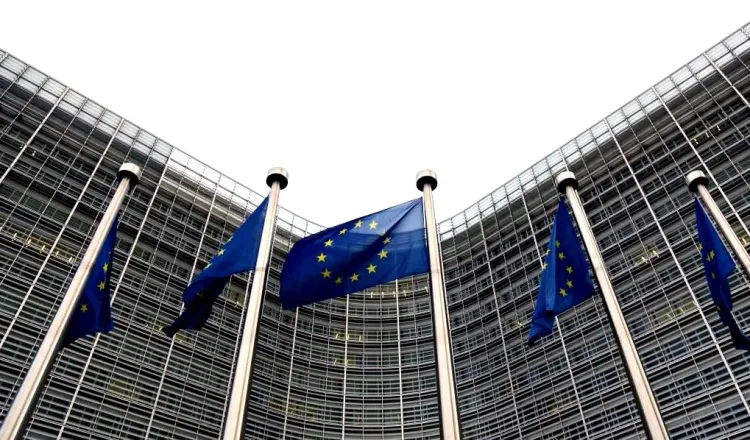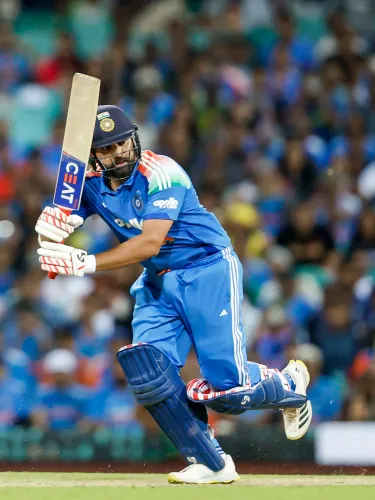How is the EU Positioning India as a Strategic Ally?

Synopsis
Key Takeaways
- India and EU launched the GGS in 2021.
- India is positioned as a key player in the Indo-Pacific.
- EU commits EUR 300 billion for infrastructure development.
- GGS aims to uphold environmental and social standards.
- India’s collaboration enhances its role in global development.
New Delhi, August 1 (NationPress) Despite numerous fundamental differences in normative principles, India views the European Union (EU) as a partner aligned in addressing infrastructure and technology strategies that pose risks to its sovereignty and security, especially concerning the China-Pakistan Economic Corridor (CPEC) and the Belt and Road Initiative (BRI), according to a detailed report.
The arguments supporting the Global Gateway Strategy (GGS) have shaped the evolving ties between India and the EU, as highlighted in a publication from the Singapore-based Lee Kuan Yew School of Public Policy.
Both the GGS and the EU–India Connectivity Partnership were initiated in 2021, establishing a structured approach to connectivity and laying the groundwork for strategic alignment.
The EU portrays its GGS as a rules-based initiative aimed at enhancing global connectivity, allocating approximately EUR 300 billion through 2027 for the development of “smart, clean, and secure” infrastructure that adheres to EU standards. The EU presents the GGS as a model for “equal partnerships” in infrastructure and digital advancement, emphasizing robust environmental and social safeguards, democratic governance, and transparency. This framework identifies India as a compatible partner while positioning China as a strategic competitor — albeit one with significant economic importance, as per the report.
In February 2023, India and the EU established the Trade and Technology Council (TTC), marking only the second such EU forum — the first being with the US — to collaborate on digital, energy, and supply-chain matters. This initiative further strengthens the relationship between India and the GGS regarding digital public infrastructure projects, enabling New Delhi to integrate its digital platforms, such as unified payments and open-data networks, with EU funding for projects in Africa and Asia. Additionally, this aligns with India’s aspirations to emerge as a partner for developing economies.
In the context of escalating trade tensions between the EU and China, the progress in negotiations for a Free Trade Agreement (FTA) between India and the EU, along with plans to utilize the India-Middle East-Europe Economic Corridor (IMEEC) as a testing ground for connectivity, is seen in New Delhi as evidence of Brussels’ intent to enhance the EU-India strategic partnership, as reported by the Lee Kuan Yew School of Public Policy.
Statements from the EU-India dialogue emphasize India’s pivotal role as a key ally in the Indo-Pacific. EU President Ursula von der Leyen has referred to India as a “leading voice of the Global South” and a “bridge” connecting the Global South with the EU. Earlier in June, External Affairs Minister (EAM) S Jaishankar and European Commissioner for International Partnerships, Jozef Síkela, reiterated their commitment under the GGS, focusing on “joint investments in sustainable development projects that create jobs, connect communities, and enhance our global resilience.”
Although the EU and China celebrated their 50th anniversary during the EU–China Summit in Beijing, diplomatic relations remain open. However, deep-rooted mistrust regarding trade and security looms large, hindering any substantial breakthroughs in the near future. The EU is pursuing a policy of “de-risking, not decoupling”, striving to safeguard critical supply chains and diversify dependencies while continuing to engage in dialogues on climate, energy, technology, and regulations.
Since its inception in 2021, the GGS is often perceived as a values-based, high-standard alternative to China’s Belt and Road Initiative (BRI). The GGS has pledged to uphold open procurement and high environmental and social standards — aspects that distinguish it from the BRI, which frequently favors China’s state-owned enterprises and financial institutions. This initiative seems designed to address common critiques associated with the BRI. The EU views the GGS as a means to “confront pressing global challenges” and promote EU norms. However, a leaked EU strategy document describes the GGS as a tool in a geopolitical “battle of offers” against China, as per the report.
The EU has identified India as a strategic ally in developing resilient, rules-based connectivity, while China is viewed as a competitor whose model the GGS aims to counter. Under the EU’s strategic narrative, China is largely regarded as a systemic rival, with terms like “strategic autonomy” and “de-risking” frequently appearing in Brussels’ discussions regarding Beijing, highlighting caution and concern. Meanwhile, the EU perceives India as a collaborator and an emerging leader in the Global South.









